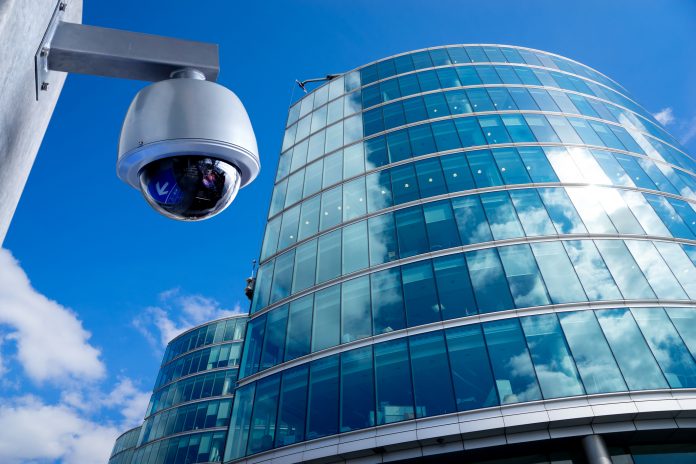Justin Freeman, technical manager of the Master Locksmiths Association, offers some advice on keeping estate security at its peak
With the news that the number of crime incidents recorded in Britain has gone up by 6% over the course of the last year, the Master Locksmiths Association, the leading trade association for the locksmithing industry, has issued new advice to help estate managers prepare and protect against an increasingly threatening crime landscape.
The most important step in ensuring the safety of your estate is to establish an effective strategy from the outset – one that ensures any issues relating to security and safety management are identified and addressed promptly and in a systematic manner. An effective security policy should begin at the very top and permeate itself throughout your organisation.
Clear and well-defined roles and responsibilities are vital and all staff should be aware of this strategy and understand their role within it, including any key personnel within tenant businesses.
When establishing your security strategy, consider the areas that could be prone to security threats and be sure to amend your plans accordingly. Dependent on the nature of the estate, you will typically be dealing with a large and often complex site with numerous access and entry points, and multiple purposes and users.
Determining security needs can be a complicated and time-consuming matter and it’s important that those with responsibility receive relevant and frequent training. However, it’s all too easy for another member of the team to inadvertently take on security and safeguarding responsibilities without realising.
This unplanned assumption of security roles can be highly dangerous – an example we see all too frequently is staff members placing padlocks on emergency doors to prevent people from opening them and causing a nuisance, without realising it could invalidate insurance and make them legally responsible if people are unable to exit a building or area in the event of an emergency.
Embracing technology
When it comes to security itself, technology can be a significant help, especially in areas with high footfall. Investing in high quality CCTV cameras can help provide indisputable evidence should an incident occur, whether it be a burglary or false injury claim.
Electronic door openers and closers are another great way of enhancing the security of your facility as they ensure that doors close properly.
Investing in electronic access control may also be something you wish to consider. Not only can it help you monitor and regulate access to various areas, it also allows access rights to be changed relatively quickly and cheaply.
However, within your security strategy, be careful to distinguish between access control and primary security measures. Put simply, the role of an access control system is to limit access to certain parts of a building or site to specific individuals. They can range from a very simplistic form of digital code lock (mechanically operated push button locksets) operated by a simple code, right the way through to complex smart security systems that enable managers to add or delete users from a central location.
While people using a facility without the level of knowledge of facility management will assume any door with a lock on it is secure, access control products are not tested to security or attack standards and should not be relied upon as primary security products.
Whether operated by fingerprint, swipe card, smart phone or facial recognition, many facilities managers we speak to have already introduced smart security and it’s easy to see the appeal. With ever-more sophisticated operating systems, smart security can increasingly be integrated with existing CCTV and alarm systems, and can also be integrated with time and attendance systems.
Perhaps most useful of all, smart locks are highly configurable. Digital locks can be changed in an instant and records stored of when a lock has been activated and by whom. In short, smart security is promising optimum convenience, enhanced security and access to valuable, real-time information.
The security of smart systems remains, however, far from secure. In the case of smart security, it’s the ‘key’ element of a smart lock that is particularly problematic. This is because whether it’s voice, card, tag, smart phone or biometric data that is used to activate the lock, this data is difficult to safeguard. Not least as it is usually stored within web-based storage, such as the cloud, which presents its own risks.
While the UK has for a long time had excellent security standards for mechanical security – including BS 3621, 8621, 10621, BS EN 1303, BS EN 12209 and PAS 24 for complete windows and doors – the first security standards for smart locks have only just been published. As a result, the smart security industry as it is today has developed without this guidance. None of the smart locks currently on the market have yet been tested against the new security standards and the standards are yet to be recognised by insurers and police forces.
The Master Locksmiths Association has to date considered smart security to be a secondary security measure or the equivalent of ‘access control’. While the newly developed security standards come into effect, we would continue to recommend caution and advise against using smart security as a primary security measure.
Fire safety
If you are thinking of using smart security for access control, it is vital that, as with any access control equipment, you ensure this is used in a manner that complies with the fire safety regulations.
In 2006, the Regulatory Reform (Fire Safety) Order 2005 (RRO) came into force, stating that a facility’s ‘responsible person’, rather than a fire officer, was in charge of ensuring a facility complies with the Fire Safety Order.
For most facilities or estate managers, this meant they were responsible for ensuring the facility complies with the Fire Safety Order and operates good practice in all aspects of safety and security. It is a requirement in this role to ensure a risk assessment is carried out to check access control has the correct failsafe/fail secure operations in place. This includes determining a failsafe should the power to the smart security system be cut.
It’s also important to have a good understanding of health and safety requirements, including checking escape routes and fire doors, to ensure that in an emergency there are no complications.
Evacuation points and security can be a confusing prospect – occupants need to be able to escape the facility easily, while mitigating the risk of perpetrators gaining access.
Understanding who uses a site or building is also key as regulations relating to emergency exit hardware (often termed panic hardware) will differ depending on whether it will only be members of staff, who will be familiar with the layout of the building, or whether it may be members of the public who are in the building for the first time. If in doubt, an MLA-trained locksmith can give you tailored advice on this and specify products that meet the requirements of the risk assessment.
If not already in place, a security training plan covering the training, drills and security actions of people at the facility should be implemented, as well as being included in induction training. Selected security personnel should monitor the safety of the building. Not only must these individuals be trained in the operation of security equipment and systems, they should also be able to test security and safety equipment and should do so regularly.
Maintaining security
Once security is established, maintenance is mandatory. Equipment will inevitably suffer from general wear and tear, as well as the effects of ageing. Therefore, conducting regular safety reviews is paramount.
As well as checking for necessary repairs, be careful not to help criminals gain access in any way. Any greenery on your estate will require regular and systematic checking, too. As nice as trees and shrubbery look, they can provide areas of cover for intruders and lead to blind spots on CCTV footage as their grow. Ensure that trees, plants and CCTV are all placed correctly so that there are no blind spots. Also, be wary of placing them too close to fencing.
As trees grow, their branches could eventually offer a ready-made access ladder over your perimeter fencing. Similarly, industrial wheelie bins and other large items should be kept well away from the perimeter.
However, perhaps the greatest single influence on the success of your security is ensuring that the strategy and equipment you use is correct from the outset. When replacing equipment, be careful not to skimp on poor replacements. Cheaper may not always be better – and we often see insurance policies invalidated by poor quality or badly maintained equipment.
If you’re in doubt, ask. Taking advice from a qualified and competent individual – such as an MLA-approved locksmith – helps to provide the peace of mind you need. All MLA-approved locksmiths undergo strict vetting, and regular inspections and training, so you can be confident in the advice they provide – from recommending products that are fit for purpose, providing professional installation and maintenance services to undertaking fully comprehensive security reviews to help shape your security strategy.
For more information and advice, visit www.locksmiths.co.uk.
Jason Freeman
Technical Manager
Master Locksmiths Association
Tel: +44 (0)1327 262 255
Twitter: @MLA_locksmiths
Facebook: MasterLocksmithAssociation
LinkedIn: Master Locksmiths Association




![[VIDEO] Making DorTrak reports easy to read with Fireco Inspecting fire doors at Fireco, firedoor technology, 2023](https://www.pbctoday.co.uk/news/wp-content/uploads/2024/04/JPZ_2364-web-218x150.jpg)









